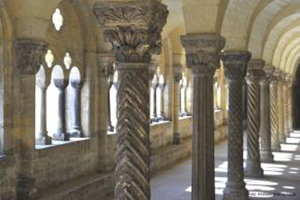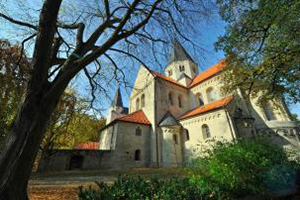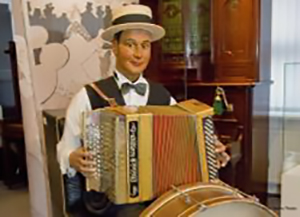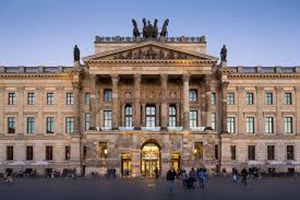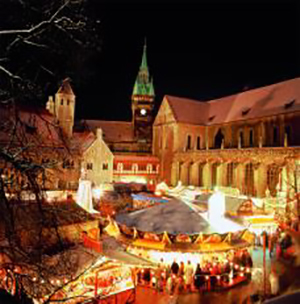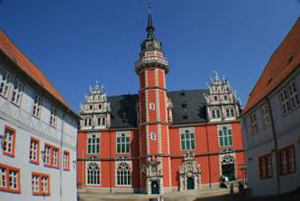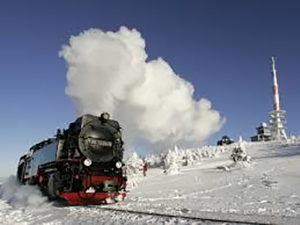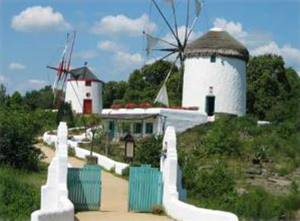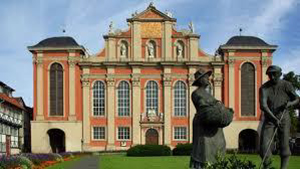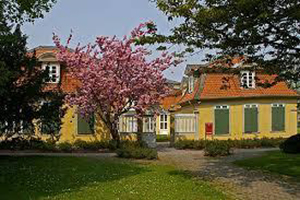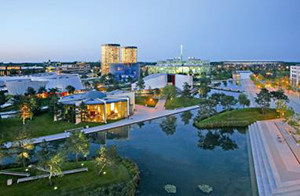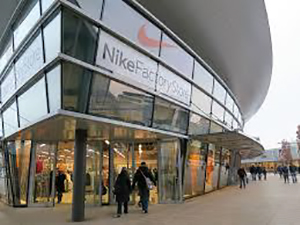EXCURSION TIPS FOR THE REGION
Königslutter
pleasant cathedral city on the Elm
Königslutter has around 16,000 inhabitants and a lot to offer visitors.
To get to know it, the first thing we recommend is a stroll through the winding streets and alleyways. Emperors and kings, craftsmen and artists – Königslutter owes its historic buildings of unique beauty to them. The town developed from the village of Lutter and was granted town charter around 1400. Above all, it was the brewing industry that caused it to flourish: 73 breweries were authorized to brew Duckstein beer, which was exported far and wide. Mr. Frank Wulke from www.brauwerk2010.de offers, for example, brewing seminars, beer tastings and guided tours of the town on the subject of brewing.
The biggest attraction is the Benedictine Abbey Church of St. Peter and Paul, built by Emperor Lothar in 1135, now commonly referred to as the Imperial Cathedral (photos above and center). Next to the cathedral is the historic cathedral building hut, the Museum of Mechanical Musical Instruments www.museen-koenigslutter.de (photo below) and the 800-year-old Emperor Lothar lime tree.
Königslutter is also home to the information center for the “Harz – Braunschweiger-Land – Ostfalen ” geopark www.femo-online.de or www.geopark-braunschweiger-land.de. The FEMO (Freilicht- und Erlebnismuseum Ostfalen) offers guided adventure hikes.
Guided tours of the town and cathedral can be ordered directly from the Königslutter Tourist Office (Ms. Espenhain 05353/912-129 or Dr. Funke 05353/912-202).
Brunswick
21 km away
With a population of around 251,500, Braunschweig is the second largest city in Lower Saxony and the cultural and economic center of the region.
Braunschweig has a lively, interesting and varied city center that invites you to explore its extensive pedestrian zones. During a historical city tour, the traditional islands of Burgplatz, Altstadtmarkt, Magniviertel, St. Aegidien and St. Michaelis await you to bring you closer to the history of Braunschweig.
Also visit the most beautiful Christmas market in northern Germany “Around the Cathedral and Burgplatz” (photo below), which is open every year from the end of November to December 29.
You can discover the idyllic sides of the city from the water on a canoe tour on the Oker (photo center). Information on boat hire and many special events can be found at www.okertour.de.
For an extensive shopping tour, we recommend the “Schloss-Arkaden” shopping mile (photo above).
Helmstedt
16 km away
The former university and Hanseatic town of Helmstedt, with around 25,800 inhabitants, is located in the middle of the scenic Elm-Lappwald Nature Park.
The historic city centre with the old university building “Juleum” (photo) invites you to stroll and linger and is characterized in particular by the more than 400 professors’ and half-timbered houses from the 16th and 17th centuries, which are adorned with magnificent facades. An idyllic excursion destination is the Brunnental in the state-approved health resort of Bad Helmstedt.
Furthermore, the concentration of tangible border history in the Helmstedt area is unique in Germany. The Zonal Border Museum documents the former inner-German border in five sections, from its beginnings to the reunification of Germany in 1990 www.zonengrenzmuseum.de, using original objects, photographs and life-size stagings.
Schöningen
18 km away
Schöningen, the charming town on the Elm, has a population of 12,500 and is considered the oldest town in the former Duchy of Braunschweig.
Among the numerous sights are the market square (photo above), the castle and the Romanesque churches of St. Lawrence and St. Vincent (with Gothic parts).
But today’s Schöningen also offers visitors a variety of sports and leisure activities, such as a golf course and a swimming center. The traditional town and folk festivals are known far beyond the borders.
On 01.07.2019, the Lower Saxony State Office for the Preservation of Monuments opened the Schöningen Research Museum at the paläon site. (photo below), which features the “Schöningen Spears ” exhibition as its main attraction.
Wernigerode and Harz
60 km away
The picturesque town of Wernigerode (photo above) with its 35,000 inhabitants is nestled in the low mountain range of the Harz Mountains and stretches far into two valleys. The well-preserved town center with its colorful half-timbered buildings from five centuries, narrow alleys and idyllic corners characterizes the face of the town. Wernigerode Castle, a magnificent building with an 800-year history, rises high above the town.
Wernigerode is a convenient starting point for excursions and hiking tours in the historic surroundings and to the highest mountain in the Harz, the legendary Brocken. A trip on the Harz narrow-gauge railroad is a special experience (photo below). www.harzinfo.de
Gifhorn
40 km away
The International Mill Museum opened its doors in Gifhorn (population 42,000) in 1980. The museum grounds have been expanded year after year with original replicas of various mills, making it increasingly attractive and providing a varied overview of the different types of water, wind and other mills.
Wolfenbüttel
25 km away
City of Lessing and residence of the Dukes of Brunswick and Lüneburg Wolfenbüttel (population 52,150) was the residence of the culture and art-loving Guelph Dukes for 300 years. Magnificent historical buildings, town houses, unique churches and over 600 half-timbered houses characterize the city centre. Wolfenbüttel Palace (photo above) is the largest still standing in Lower Saxony. The Lessing House Museum (photo below) tells the story of Gotthold Ephraim Lessing (1729 – 1781), his work and his time in Wolfenbüttel (1770 – 1781). The first newspaper to appear regularly in the German language was printed here in 1609.
A guided tour of the town can be booked through the Wolfenbüttel Tourist Office www.wolfenbuettel.de/Tourismus.
Wolfsburg
25 km away
The city of Wolfsburg was founded in 1938 as the headquarters of the Volkswagen plant, is the fifth largest city in Lower Saxony with around 125,000 inhabitants and is one of the few cities founded in the first half of the 20th century in Germany.
“Experience mobility” is the motto of AUTOSTADT (photo above), which is located directly at the Volkswagen Group headquarters in Wolfsburg. An area of 25 hectares with buildings, pavilions and a park landscape interspersed with water invites you to experience the topic of cars and mobility in a new and surprising way. The Autostadt sees itself as an experience and competence center for automobility. It takes visitors of all ages on a fascinating journey of discovery into the world of the automobile. Special events throughout the year set special highlights.
The second highlight is the phæno – experimental landscape of the natural sciences. In an architecturally highly interesting building, phæno makes fundamental topics from science and technology clear for everyone! phæno awakens the desire for real discovery – not only of impressive natural spectacles such as lightning, surf or tornadoes!
Furthermore, a visit to the art museum, the car museum or the historic Renaissance
castle, Wolfsburg (photo center), is of course always worthwhile.
The Designer Outlets Wolfsburg – Germany’s first inner-city outlet center – are located in the heart of the city. You will find over 90 top international brands in impressive architecture. Throughout the year, you can expect prices up to 70% lower than the recommended retail price.



